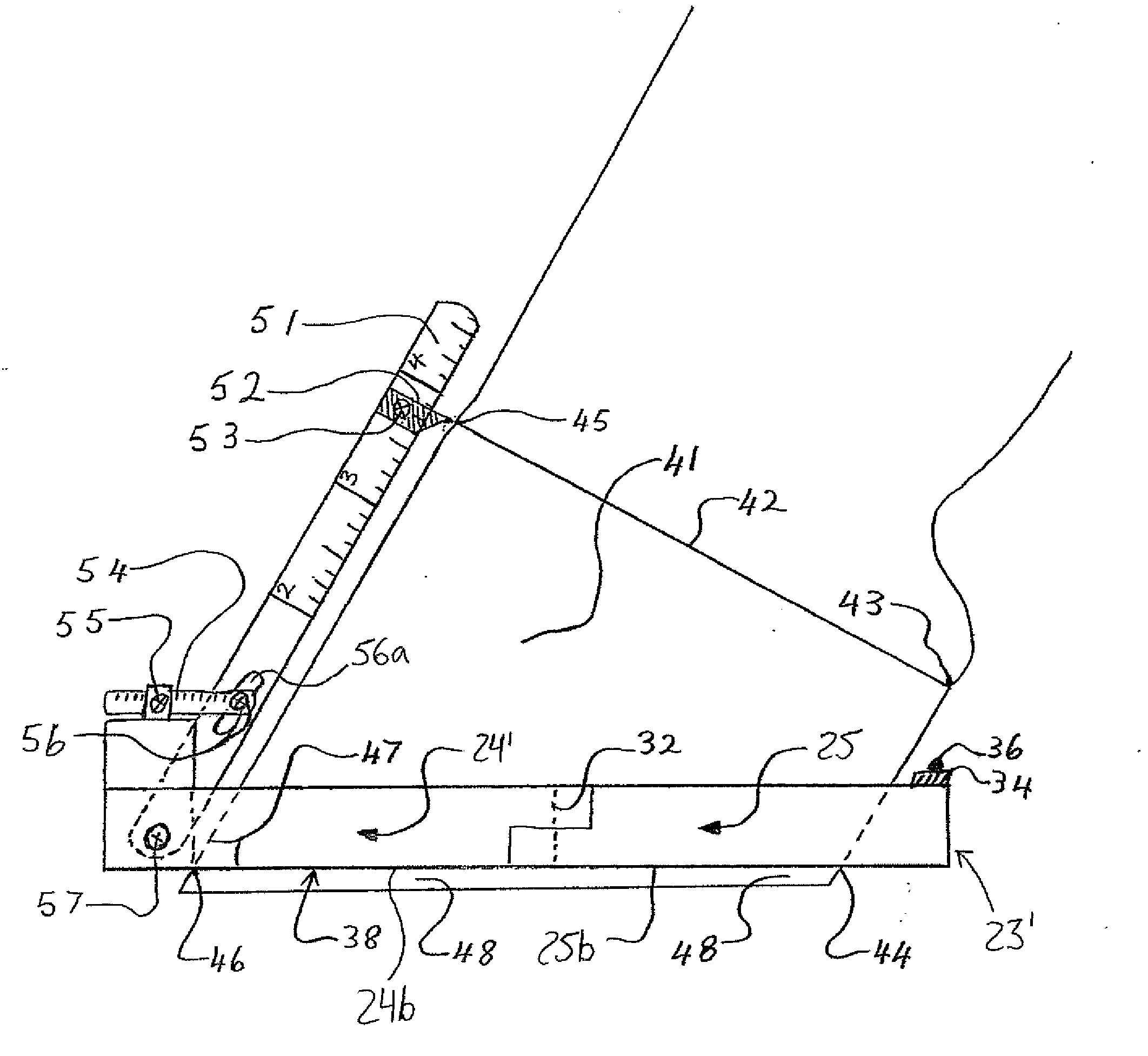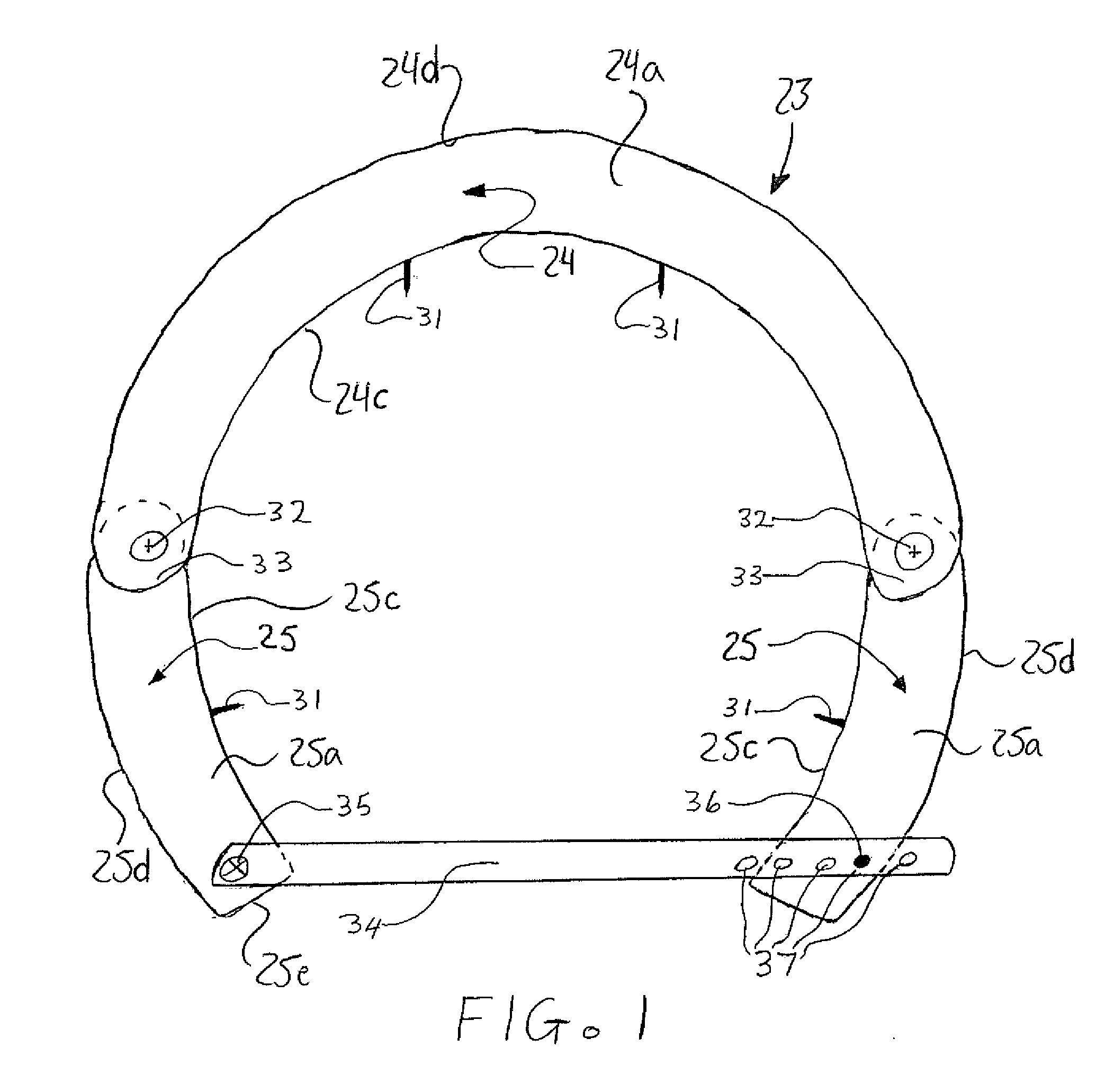Template Device and Method for Trimming Equine Animal Hooves
a template device and hoove technology, applied in the field of correct hoove trimming of the equine foot, can solve the problems of extreme stress and strain on the back, spine, leg muscles, joints and tendons, and the foot will be out of balance side to side, and nothing can be done to correct this mistak
- Summary
- Abstract
- Description
- Claims
- Application Information
AI Technical Summary
Benefits of technology
Problems solved by technology
Method used
Image
Examples
first embodiment
[0056]FIG. 1 is a drawing of a first embodiment or basic version of the device 23 in a closed and locked position. Except for a high tension heel strap 34 the device 23 is made of high quality tool hardened steel thereby making this device 23 very durable. Steel holding pins 31 penetrate the horse's foot / hoof wall 41 when this device 23 is attached (FIGS. 3 & 4) to the horse's foot 41. These holding pins 31 penetrate into the hoof 41 about a quarter of an inch on average. (depending on the size of the foot 41). The holding pins 31 contribute greatly to holding the device 23 firmly in place when attached (FIGS. 3 & 4) to the horse's foot 41. The penetration of the holding pins 31 into the horse's hoof wall 41 are very close to ground surface (FIGS. 3&4) where the hoof wall 41 is thick enough and insensitive enough that the horse feels no discomfort. The small holes left in the hoof wall 41 by the penetrating holding pins 31 are much less damaging to the hoof wall 41 than horseshoeing...
second embodiment
[0073]FIG. 4. is a drawing of a second embodiment device 23′ in the position attached and locked on firmly to the horse's foot 41 ready for the farrier to trim off the excess hoof wall 48.
[0074]The second embodiment device differs from the first in that a hoof gauge 51-57 has been added to the basic first embodiment device 23.
[0075]In FIG. 4 drawing it shows the hoof gauge including measurement indicia going up to 4½ inches of toe length, which is more than adequate for a large riding horse; big draft horses would require bigger devices 23 and bigger gauges 51-57.
[0076]The length of toe gauge features a measuring arm 51 with a sliding unit 52 slidably carried thereon for selective displacement along the measuring arm. This sliding unit 52 has a locking set screw 53 on it. This allows the farrier to pre-set and lock-in the desired length of toe to be measured from the coronary band 45 down the front of the hoof wall to mark the level to which the hoof should be trimmed at the toe. Ma...
PUM
 Login to View More
Login to View More Abstract
Description
Claims
Application Information
 Login to View More
Login to View More - R&D
- Intellectual Property
- Life Sciences
- Materials
- Tech Scout
- Unparalleled Data Quality
- Higher Quality Content
- 60% Fewer Hallucinations
Browse by: Latest US Patents, China's latest patents, Technical Efficacy Thesaurus, Application Domain, Technology Topic, Popular Technical Reports.
© 2025 PatSnap. All rights reserved.Legal|Privacy policy|Modern Slavery Act Transparency Statement|Sitemap|About US| Contact US: help@patsnap.com



